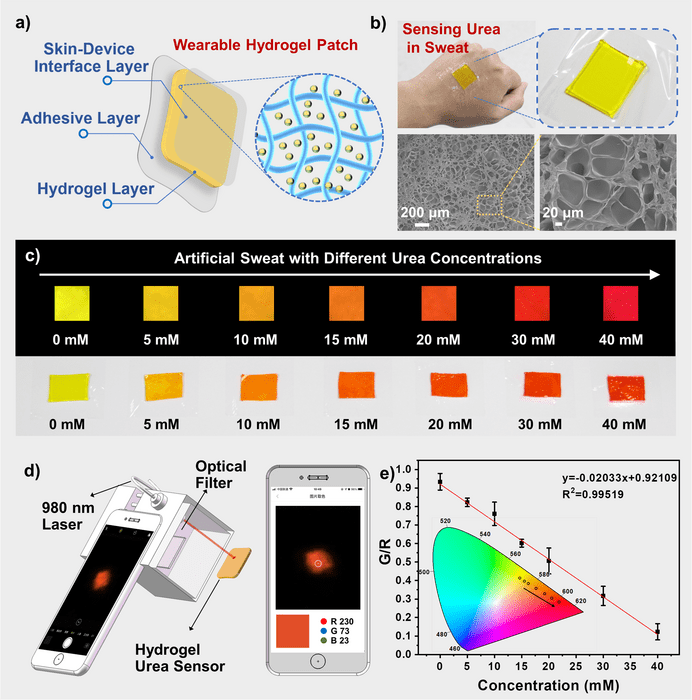Recently, a research team from the Institute of Solid State Physics, Hefei Institutes of Physical Science (HFIPS) of Chinese Academy of Sciences developed a wearable sensing patch and realized rapid quantitative analysis of urea.
The related results have been published in prestigious international journal Analytical Chemistry.
Urea, which is excreted through sweat, urine, saliva and blood, is considered an important indicator of renal function in clinical diagnosis. Effective detection of urea level is crucial for early detection of disease. Wearable fluorescence-based sensors have attracted much attention of users, but traditional fluorescent hydrogels are excited by short wavelength. It is easy to be interfered by spontaneous and background fluorescence in the detection of biological samples. Upconversion nanoparticles (UCNPs), which can eliminate the self-fluorescence and background interference of biological samples, are therefore an effective strategy to detect human biomarkers with high sensitivity.
“We embedded an upconversion optical probe into a three-dimensional porous polyacrylamide (PAM) hydrogel, and combined the patch with a smart phone color reader,” said Prof. JIANG Changlong, who led the team.
The PAM hydrogel sensor was based on an upconversion optical probe, which was composed of UCNPs and p-dimethylamino-cinnamaldehyde (p-DMAC). Due to the internal filtration effect (IFE), the red product produced by the reaction of urea and p-DMAC quenched the green fluorescence of UCNPs and made the upconversion fluorescence change from yellow to red, thus realizing the fluorescence detection of urea.
On this basis, a flexible wearable sensor was made by combining PAM hydrogel, and a portable sensor platform was constructed by 3D printing technology.
The detection limits (LODs) of the self-designed upconversion fluorescent probe and hydrogel sensor were just 1.4μM and 30μM, respectively. They were much lower than the urea content in sweat and means higher sensitivity.
The designed sensing patch provides a convenient and accurate sensing strategy for detecting biomarkers in body fluids, and has the potential to be developed into a device for providing disease warning and clinical diagnosis, according to the team.
Journal
Analytical Chemistry
DOI
10.1021/acs.analchem.2c03806
Article Title
Multiplex chroma response wearable hydrogel patch: Visual monitoring of urea in body fluids for health prognosis
Article Publication Date
8-Feb-2023

















